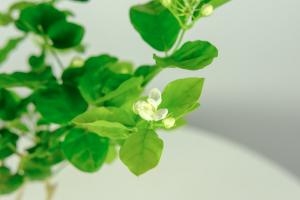What Does an Overwatered Plant Look Like?
Introduction
As an avid gardener, it can be easy to get wrapped up in the excitement of watering your plants too often. However, overwatering your plants can lead to a variety of problems that can harm your garden's overall health. In this article, we'll explore some of the key signs of overwatering in plants.
Leaves turning yellow
One of the most common signs of overwatering in plants is leaves that turn yellow. Overwatering can cause the plant's roots to become waterlogged, which can lead to a lack of oxygen that causes the yellowing of leaves. If you notice that your plant's leaves are turning yellow, it's important to cut back on watering and ensure that the soil is not too wet.
Mushy roots
Another sign of overwatering is mushy roots. When a plant's roots are constantly saturated with water, they can become soft and mushy, and begin to decay. This can not only harm the current plant but any nearby plants as well as the excess water can promote the growth of harmful bacteria and fungi.
Mold growth
Excess water can also lead to mold growth on the soil's surface. The mold thrives on the moisture in the soil and can be harmful to both the plant and the person tending to the garden. If you see any signs of mold growth, it's important to take action by cutting back on watering and ensuring proper drainage.
Conclusion
In conclusion, it's important to keep an eye out for signs of overwatering in your plants. Yellowing leaves, mushy roots, and mold growth are all clear signs that there may be excess water in the soil. By adjusting your watering habits and ensuring that your plants have proper drainage, you can help to ensure that your garden stays healthy and vibrant for years to come.

 how many times do yo...
how many times do yo... how many planted tre...
how many planted tre... how many pine trees ...
how many pine trees ... how many pecan trees...
how many pecan trees... how many plants comp...
how many plants comp... how many plants can ...
how many plants can ... how many plants and ...
how many plants and ... how many pepper plan...
how many pepper plan...































